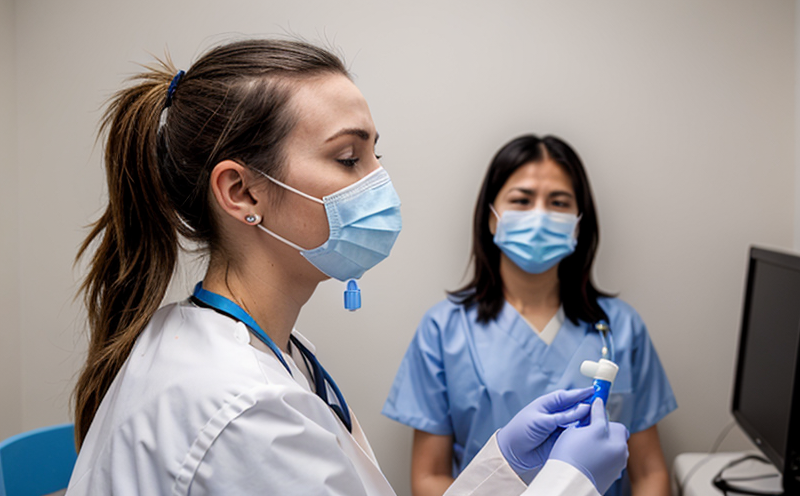Environmental Airborne Bacteria Testing in Livestock Facilities
The testing of environmental airborne bacteria in livestock facilities is a critical component of ensuring both animal and public health. Respiratory diseases, often caused by specific airborne bacterial pathogens, can have significant economic impacts on the agriculture sector. By identifying and quantifying these pathogens early, farmers and veterinarians can implement targeted interventions to prevent outbreaks.
The process involves collecting air samples from various locations within a livestock facility using specialized sampling devices. These devices capture particles suspended in the air that may contain bacteria. The collected samples are then transported to our laboratory for analysis under controlled conditions. Our team uses advanced microbiological techniques, including culture-based and molecular methods like polymerase chain reaction (PCR), to identify and quantify bacterial species.
One of the key challenges in this type of testing is ensuring that the sampling methodology does not introduce external contaminants into the samples. Therefore, we employ stringent quality control measures during both sample collection and analysis phases. This includes using sterile equipment, adhering to standardized protocols as defined by international standards such as ISO 16232:2017 for air sampling, and maintaining a clean laboratory environment.
The results of our tests provide actionable insights that can help facilities improve their biosecurity measures. For instance, if certain bacterial strains are detected at higher levels than normal, it may indicate inadequate ventilation or poor hygiene practices which need addressing immediately. Conversely, low detection rates could suggest effective current protocols but still necessitate continuous monitoring.
Our comprehensive approach ensures accurate and reliable data that supports informed decision-making processes regarding livestock health management strategies. Whether you're a large-scale farmer looking to maintain optimal conditions for your animals or an R&D engineer seeking detailed information about specific pathogens, our expertise guarantees precise results tailored specifically to meet your unique needs.
Industry Applications
Environmental airborne bacteria testing plays a crucial role across multiple sectors within the agricultural industry. Farmers involved in raising livestock are particularly reliant on this service due to the prevalence of respiratory diseases among animals. By monitoring air quality, they can anticipate potential health issues before they become widespread problems.
- Veterinary Services: Regular testing helps vets diagnose and treat ailments quickly.
- Farm Management: Identifying pathogens aids in improving hygiene standards throughout the farm.
- R&D Teams: Understanding bacterial patterns supports innovative approaches towards disease prevention.
In addition to these direct benefits, testing also contributes indirectly by informing broader agricultural policies aimed at reducing zoonotic risks. Through collaboration with regulatory bodies and scientific communities, our lab plays an essential part in shaping best practices for maintaining safe environments within livestock facilities globally.
Competitive Advantage and Market Impact
- Advanced Technology: Utilizing cutting-edge technology ensures accurate results even under challenging conditions.
- Comprehensive Reporting: Providing detailed reports helps stakeholders understand the full scope of findings.
- Timely Delivery: Quick turnaround times enable rapid response to any identified issues.
- Regulatory Compliance: Our services align with international standards, ensuring reliability and trustworthiness.
These advantages position us as leaders in the field, offering more than just testing; we provide valuable insights that drive proactive management decisions. This not only enhances individual farm operations but also contributes positively to overall public health by minimizing transmission risks associated with airborne bacteria.
Use Cases and Application Examples
| Application | Description |
|---|---|
| Disease Outbreak Prevention | Regular testing helps identify potential sources of infection early, allowing for timely interventions. |
| Hygiene Monitoring | Continuous monitoring ensures consistent adherence to hygiene protocols across all areas of the facility. |
| Epidemiological Studies | Collecting data over extended periods aids in understanding long-term trends related to specific pathogens. |
| New Product Development | Data obtained informs the development of new products designed specifically for improved biosecurity measures. |





